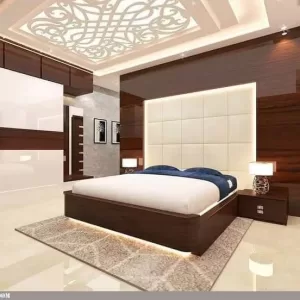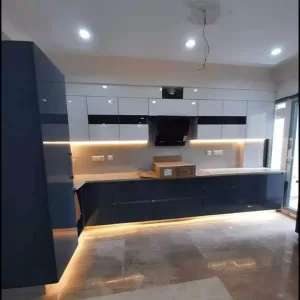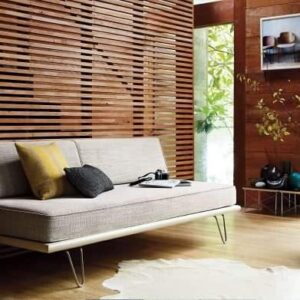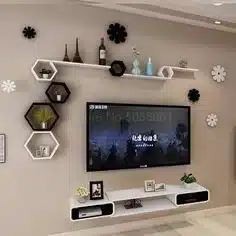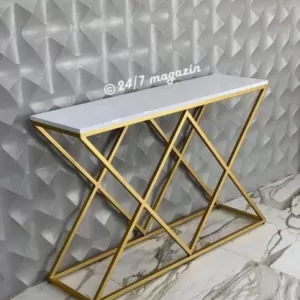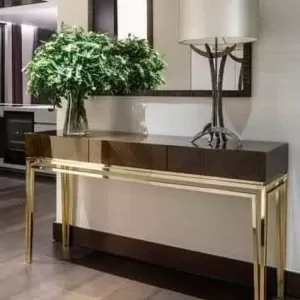Designing a living room is a rewarding task, as it’s one of the most important spaces in your home. It serves as a gathering place for family and friends, a spot for relaxation, and even a space for entertainment. Whether you’re working with a spacious or compact area, the key to great living room interior design lies in balancing functionality with aesthetic appeal. Here are some key aspects to consider when designing your living room:
1. Defining the Purpose of the Space
Before diving into the decor and furnishings, think about the primary function of your living room. This will shape the design and layout:
- Family Room: If it’s a place for family time, consider a comfortable seating arrangement, perhaps with a sectional sofa, a coffee table, and room for entertainment equipment like a TV or stereo system.
- Entertainment Space: If you envision your living room as a place to entertain guests, focus on creating a welcoming environment with ample seating, a statement lighting fixture, and perhaps a bar cart or drinks station.
- Reading Nook or Relaxation Zone: If you want a quiet, relaxing area, consider adding a cozy chair, soft lighting, and shelves of books.
2. Choosing a Layout
A well-thought-out layout is crucial to the functionality of a living room, especially in a room that will serve multiple purposes. Here are a few layout options:
- Symmetrical Layout: This traditional layout places the main furniture pieces, like a sofa and chairs, facing each other to create a balanced, formal feel. It works well for larger spaces and can be complemented with artwork and a central coffee table.
- Asymmetrical Layout: If you prefer a more modern, dynamic look, an asymmetrical layout uses varied arrangements of furniture. This layout is flexible and works well for smaller rooms or spaces that need to incorporate a variety of seating options.
- Open-Concept Layout: Many modern homes have open floor plans, and your living room layout should be designed to flow smoothly into other areas, like the dining room or kitchen. You can use rugs, furniture, and lighting to define separate areas within an open space.
3. Choosing a Color Scheme
The color scheme plays a huge role in setting the tone of the living room. It affects the mood and ambiance, so select colors that align with your personal style and the overall theme of your home. Some popular living room color schemes include:
- Neutral Tones: Shades of gray, beige, or cream offer a timeless and versatile foundation. You can add pops of color through accessories like cushions, rugs, or art.
- Bold Colors: Bright colors like teal, mustard yellow, or even emerald green can add energy and vibrancy to the space. Make sure to balance bold walls with neutral furniture or vice versa.
- Earthy Tones: Warm tones like terracotta, brown, and muted greens create a cozy, inviting atmosphere. These shades work well in rustic or bohemian-style living rooms.
4. Furniture Selection
Furniture is the foundation of a living room’s design. Here are some essential pieces to consider:
- Sofa: The sofa is usually the largest and most important piece of furniture in the living room. When selecting a sofa, consider the size of your space, the number of people it needs to seat, and your preferred style. L-shaped or sectional sofas are perfect for larger spaces, while a compact two- or three-seater is ideal for smaller rooms.
- Coffee Tables: A coffee table anchors the seating area. Consider materials like wood, glass, or metal, and choose one that complements the rest of the room’s design.
- Accent Chairs: Accent chairs provide extra seating and can introduce new colors or textures to the room. Opt for chairs that match the room’s aesthetic or offer a striking contrast for visual interest.
- Side Tables: These functional pieces are useful for holding drinks, lamps, or decorative items and help balance the room’s proportions.
5. Lighting Design
Lighting plays a major role in defining the mood of your living room. Layer different types of lighting to ensure the space is well-lit and inviting:
- Ambient Lighting: This is the general light that fills the room, such as overhead ceiling lights or recessed lighting.
- Task Lighting: Lamps, like table lamps or floor lamps, are great for reading or other focused activities.
- Accent Lighting: Use accent lights to highlight artwork, plants, or architectural features. Wall sconces, track lights, and LED strips work well for this purpose.
- Natural Light: Maximize natural light by using sheer curtains, blinds, or leaving windows uncovered (if privacy isn’t an issue). If your room gets lots of natural light, balance it with soft furnishings and light-colored walls.
6. Incorporating Art and Decorative Elements
Decorative elements add personality and style to your living room. Consider incorporating:
- Artwork: Whether it’s a large statement piece above the sofa or a gallery wall, art adds color and visual interest to the room.
- Mirrors: Mirrors can make the space feel larger and brighter by reflecting light. Consider a large statement mirror or a collection of smaller mirrors.
- Rugs: Rugs help anchor the furniture, define zones, and add warmth. Choose one that complements the furniture layout, color scheme, and overall style.
- Throw Pillows and Blankets: These accessories can be easily swapped out to change the look of the room seasonally or whenever you desire a fresh look.
- Greenery: Adding plants brings life and color to the room. Consider a mix of small potted plants, large floor plants, or even hanging plants for a touch of nature.
7. Creating a Focal Point
A focal point in the living room gives the space a sense of balance and purpose. This could be a:
- Fireplace: If you have a fireplace, it naturally becomes the room’s focal point. Arrange the furniture around it to create a cozy gathering area.
- TV Wall: In modern living rooms, the TV often serves as the focal point. Consider using a media console or wall-mounted unit to keep the room looking organized.
- Statement Artwork or Feature Wall: An oversized artwork or a feature wall with contrasting colors, wallpaper, or a gallery of framed pictures can be the focal point.
8. Making the Most of Storage
Incorporating clever storage solutions helps keep your living room tidy and organized:
- Built-in Shelving: If possible, use built-in shelves to store books, electronics, or decorative items. It’s an effective way to keep things organized without cluttering the room.
- Storage Ottomans: A multifunctional piece, a storage ottoman offers extra seating while hiding blankets, toys, or magazines inside.
- Multi-purpose Furniture: Look for furniture that serves double duty, such as an ottoman that can also be a coffee table, or a sofa with hidden storage.
9. Personal Touches
A living room should reflect your personal style. Add meaningful touches such as:
- Family Photos: Display framed family photos or create a photo wall to give the room a personal touch.
- Heirlooms or Collectibles: Showcase meaningful objects or collections to give the space character.
- DIY Projects: Personalized crafts, like a handmade throw or a custom vase, can make the room feel unique and special.
Conclusion
Designing the perfect living room is about balancing style with function. The right layout, color scheme, furniture choices, and lighting can transform your living space into a cozy, stylish retreat. Remember that personalization is key—whether through art, furniture, or small accessories, your living room should be a reflection of your personality and lifestyle. Don’t forget to optimize for comfort and practicality, especially if the space will serve multiple purposes. Happy designing!

